Aside from their prowess with the sword, many samurai and Japanese warriors were incredibly proficient in Kyudo, translating to “The Way of the Bow.” Kyudo is treated as a martial art, and like many other Eastern martial arts, it incorporates aspects of spirituality and zen into its form and practice.
So what is the difference between archery and Kyudo? Although modern European archery and traditional Japanese Kyudo both use bows and arrows, they are quite different. The attire, bow type, shooting form, purpose, and history are very different from each other.
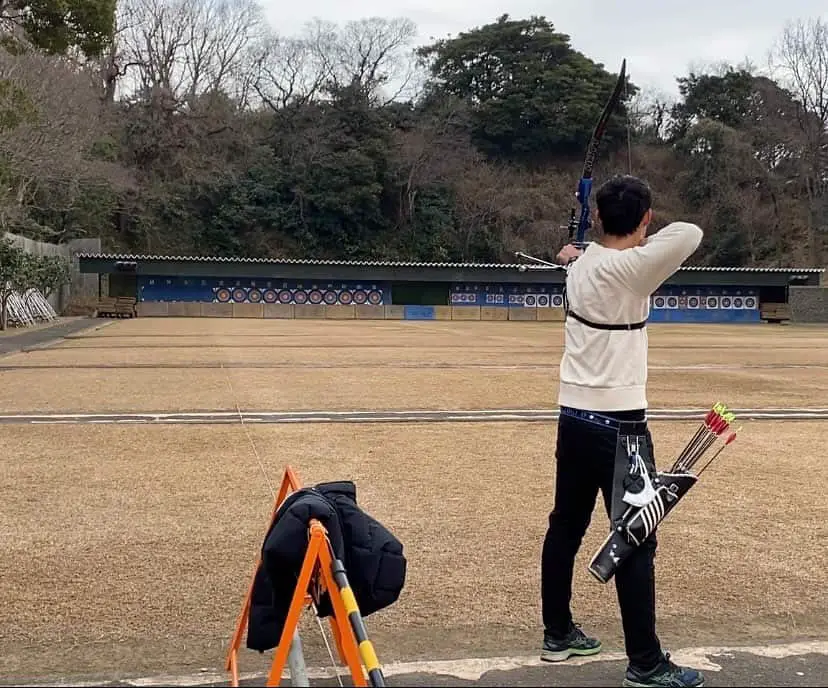

In today’s article, we’re going to take an in-depth look at the difference between kyudo and archery as you know it in the West. From its roots as a spiritual art to its practice in warfare, the Way of the Bow may just give you a fresh perspective on archery!
The Difference Between Kyudo And Archery
If you were to watch a professional American archer practice their shots and then watch a Kyudo master practice, you would immediately notice a lot of differences.
The most obvious difference is the clothing!
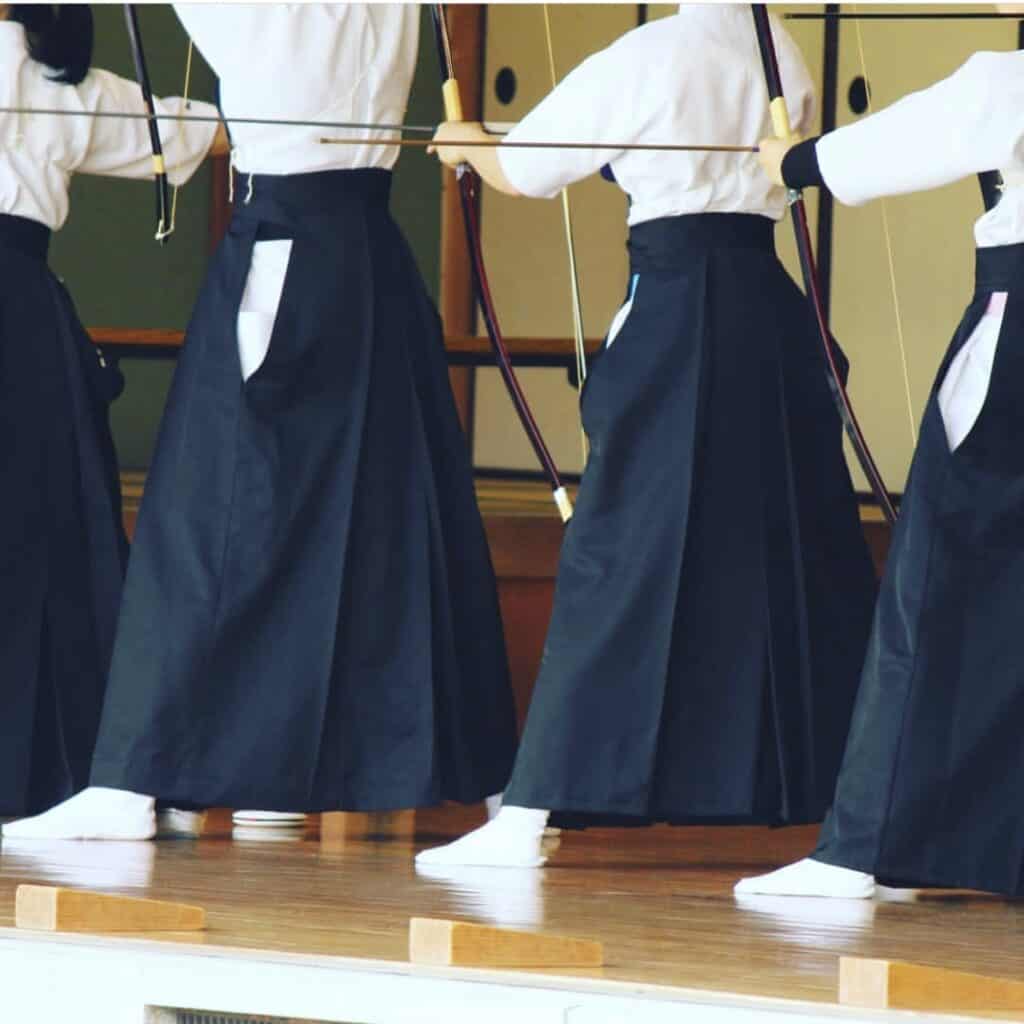
Most modern archery attire developed out of the need to protect the archer’s body from the twanging and snapping bowstring. As a result, modern archers typically wear thick clothing that’s reinforced with heavy canvas or leather. Loose clothing is discouraged so most archers wear tight, form-fitting pants and a long-sleeved top.
However, in Japanese Kyudo, the traditional garb is a long, loose shirt and a long monk-like skirt (even for the men). This clothing style dates back to the Kamakura Period, which was when art featuring heavily-robed samurai and warriors was first found. The idealogy of the loose robes is to give the Kyudo archers a better range of motion to practice long, graceful movements.
Let’s take a look at some of the other differences between archery vs kyudo.
Purpose
To better understand some of the stylistic differences between Western and Eastern archery, it helps to understand the purpose and philosophy behind the two.
Like most forms of combat in the West, archery developed out of necessity. Trees were abundant, and these were used to craft the first primitive bows and arrows to use as projectiles. These weapons were primarily used for hunting as they had limited range and accuracy. However, as the technology behind the Western bow developed, it became a common weapon to use in warfare and defense of one’s land.
The Chinese were the first to introduce archery to Japan. At the time, Japan was immersed in Shintoism- their earliest religion. What made Shintoism unique was that it turned almost every aspect of Japanese culture (even combat) into an art. Hence Kyudo was born.
Unlike the Europeans, who solely viewed archery as a means to an end (shoot the target), the Japanese art of Kyudo was as much a spiritual discipline as it was a means of self-defense. To practice Kyudo, an archer has to be in-tune with their spirit, learn incredibly focus, and hold true to graceful form.
It’s very similar to the Japanese art of gardening – Ikebana. Unlike Western gardening, which focuses on producing the biggest fruits, vegetables, and flowers, Ikedama is more concerned with growing a beautiful, graceful plant that brings attention to the spirit within.
Different Bow Types
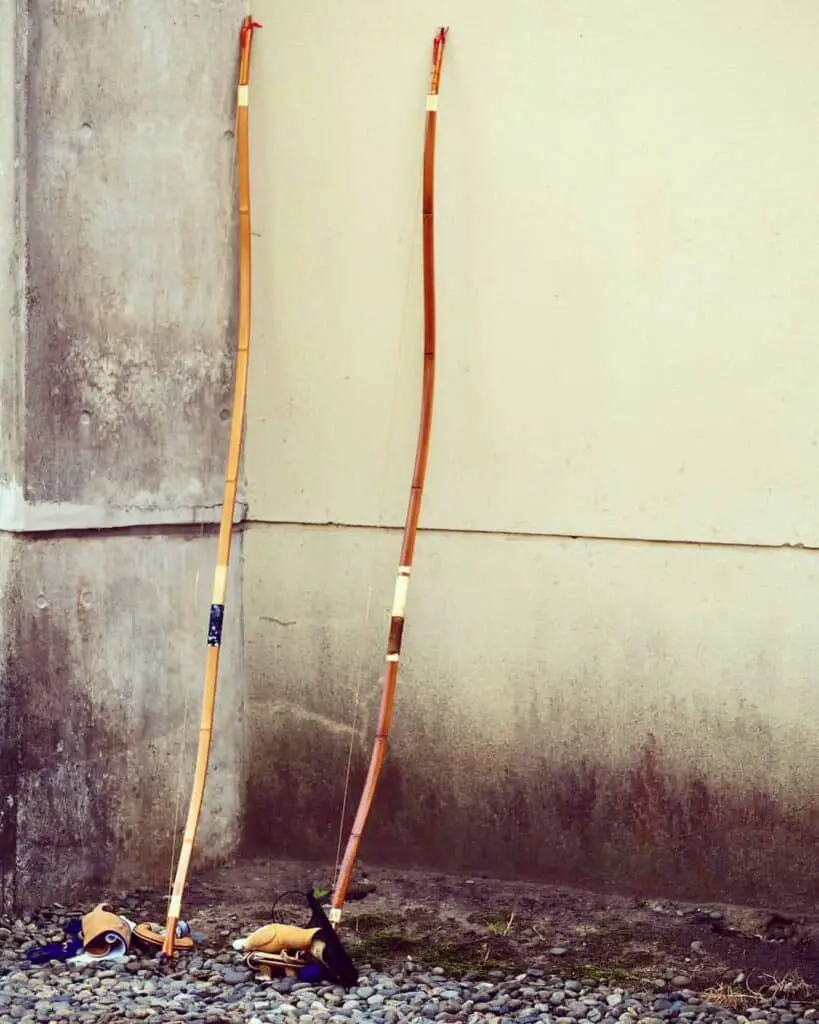
Aside from philosophy, Kyudo uses an entirely different type of bow. The Yumi (Japanese bow) is made from bamboo limbs, shoots bamboo arrows, and closely resembles the English longbow in terms of curvature and length.
Since they’re made from bamboo (which tends to be rather brittle), the bows must be made long to prevent the bow from splintering when drawn. The advantage is that the bamboo arrows were incredibly lightweight and could fly long distances.
Early European fletchers quickly realized that they could use stronger types of wood and different carving/curing techniques to make bows smaller. However, since bamboo was the most plentiful resource in Japan, they stuck with their traditional bow-making ways.
Today’s modern archers typically use a compound bow, which uses a series of pulleys and composite materials to create a bow that’s far more powerful than anything in history. These bows often have scopes, lasers, and special hand-grips attached which give the archer a considerable technical advantage.
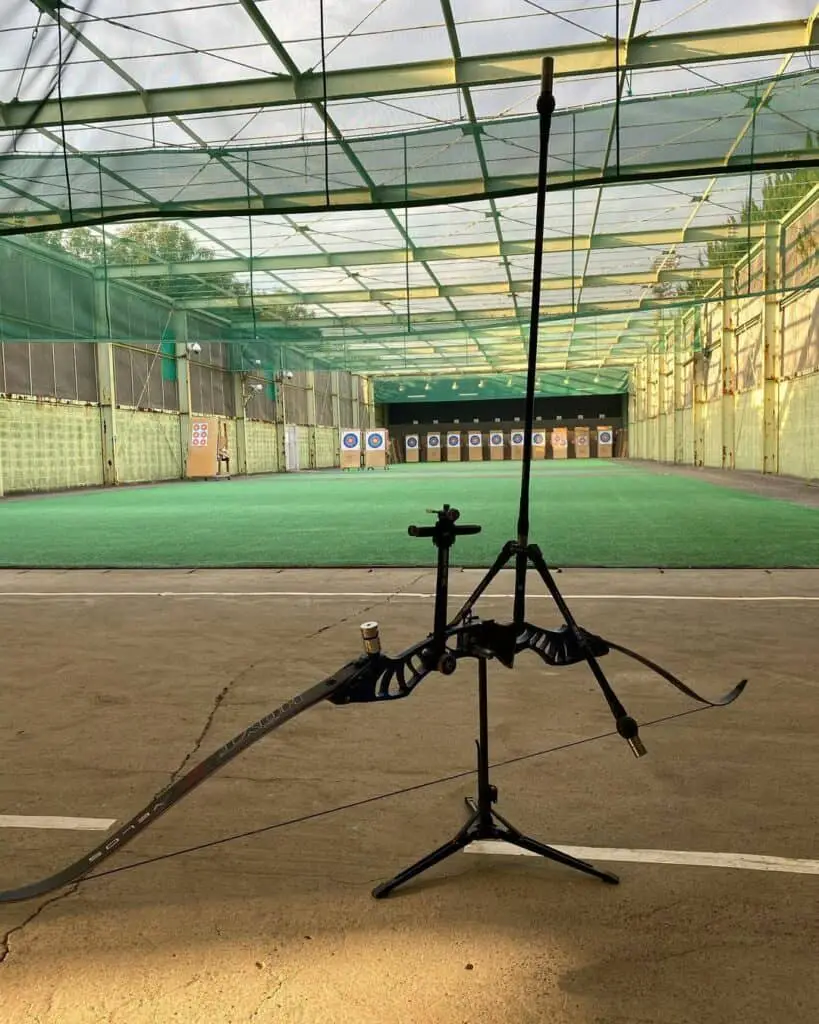
Archers who practice Kyudo, on the other hand, still use the same traditional bamboo longbows. Kyudo is more about training the body and mind to work with nature than it is about gaining a tactical advantage.
Difference In Form
Watching a Kyudo archer prepare to make their shot is like watching a ballet. The series of movements (sometimes called the kata) involves starting in a kneeled position and gradually raising their arms above their head, stringing their arrow, and gracefully drawing it back.
Compared to Western archery, Kyudo is far more graceful. This is due to the martial art’s history and relation to Shintoism, which encourages graceful movements that mimic patterns found in nature, such as the graceful movement of a swan or the striking of a tiger.
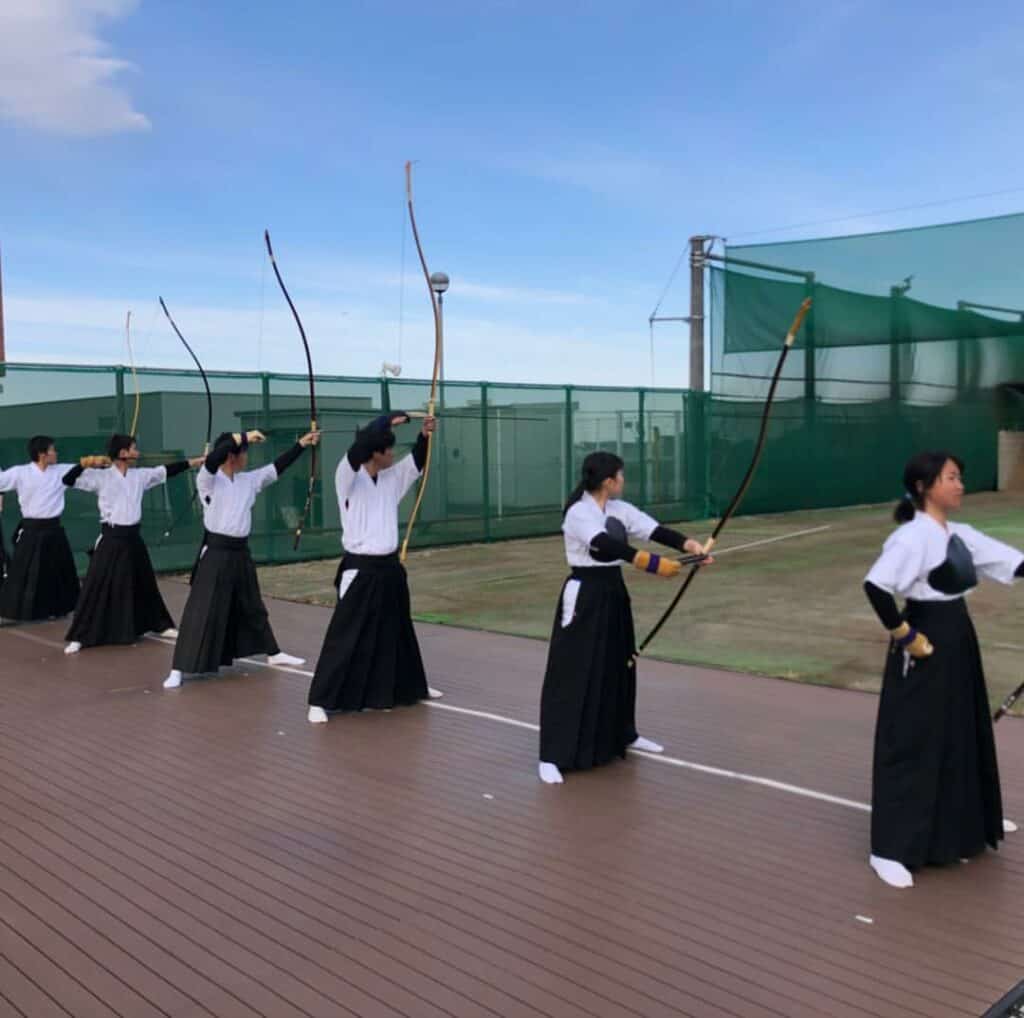
In Kyudo, the archer is encouraged to remain incredibly calm, focus their breathing, and hone in on their target. Through repetition of the same movements with the same bow, the body should naturally memorize the form so that the archers need only focus their undivided attention on their target.
This is very different from Western archery, which often encourages the archer to learn how to shoot multiple types of bows and shoot from different positions. You’ll never see a Western archer kneeling and performing complex artistic movements. Everything is about efficiency, accuracy, adaptability, and speed.
Archery Vs. Art
Today, Kyudo is regarded as a spiritual practice more than anything. It involves being committed to an ancient way of doing things and requires the archer to enter a different mindstate than they may be used to for Western archery.
For some, this can be very meditative. For others, it can be a hindrance. Kyudo is an art. It’s not something that you can learn quickly and then go hunting with. It’s something that takes years to master and often requires being taught by a master in an official Dojo.
If you enjoy the art and spirit behind archery, though, then Kyudo may be for you! Your best bet is to find a Dojo where Kyudo is taught, sit-in on a class, and have a conversation with the teacher. Often, the teacher will tell if the martial art is right for you before you even begin.